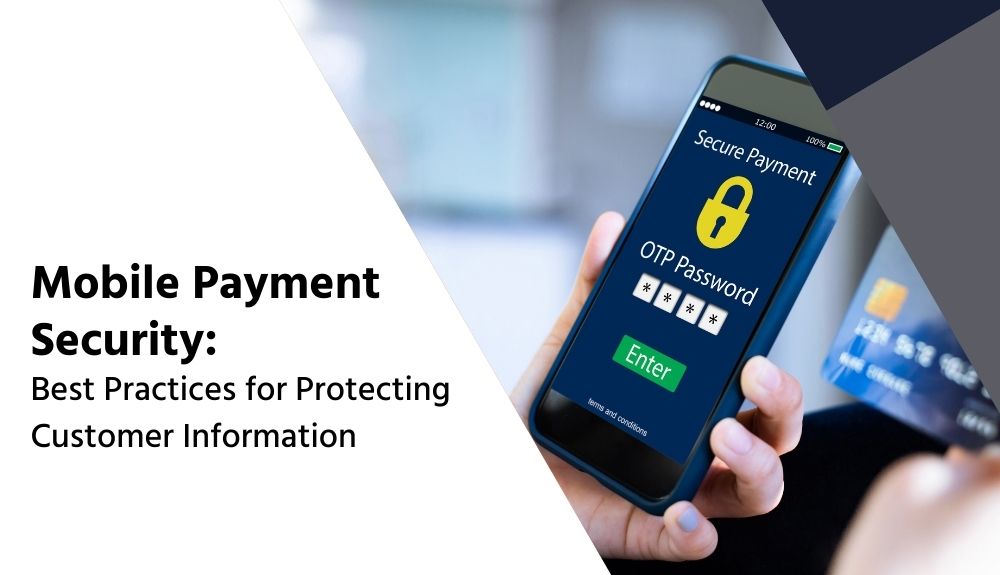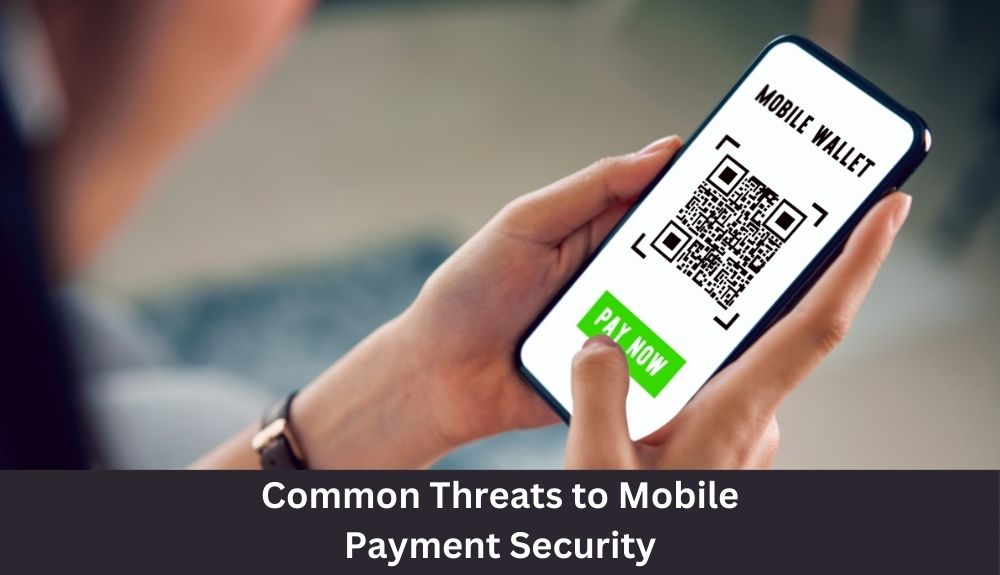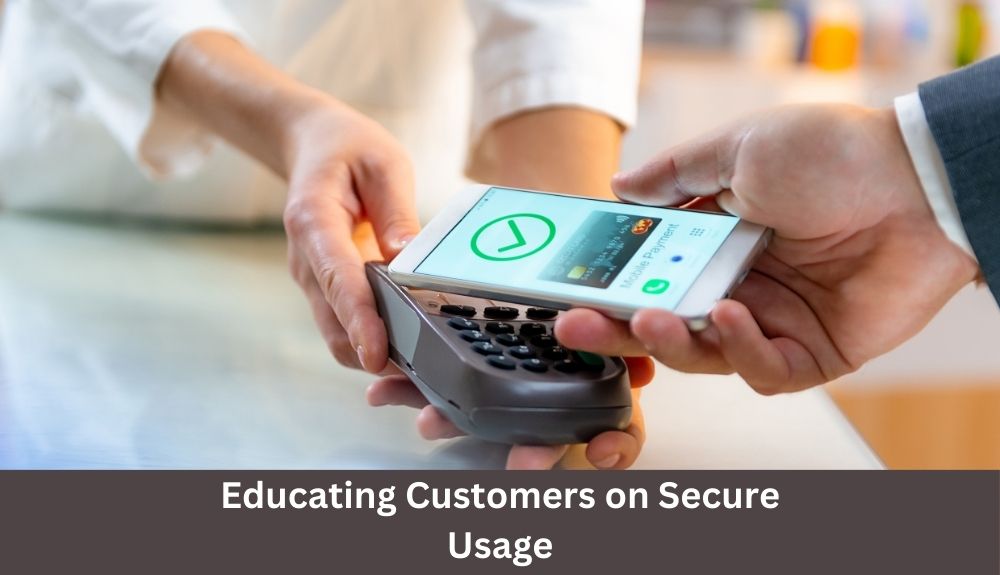
By max February 6, 2024
Mobile payments have become increasingly popular in recent years, revolutionizing the way we buy goods and services. With just a few taps on our smartphones or smartwatches, we can make purchases conveniently and swiftly. However, as this payment method gains momentum, so does the need for robust security measures to protect customer information. In this blog post, we will delve into the best practices for safeguarding sensitive data in mobile payments. So grab your virtual seatbelt and get ready to explore the fascinating world of mobile payment security!
The Rise of Mobile Payments
In the past decade, mobile payments have witnessed an unprecedented surge in popularity. Gone are the days when we had to fumble for cash or whip out our credit cards at the checkout counter. Now, with just a few taps on our smartphones, we can complete transactions swiftly and securely.
This rise in mobile payments can be attributed to several factors. The widespread adoption of smartphones has made this payment method accessible to a larger population. Nearly everyone carries a powerful mini-computer in their pocket these days, making it easier than ever to make purchases on-the-go.
Moreover, convenience plays a significant role in fueling the growth of mobile payments. With digital wallets and payment apps like Apple Pay and Google Pay, users no longer need to carry multiple physical cards or remember countless PINs. Everything is conveniently stored on their devices.
Additionally, recent advancements in technology have paved the way for secure and seamless mobile payment experiences. The implementation of near-field communication (NFC) technology allows users to make contactless payments by simply tapping their devices against compatible terminals.
Furthermore, businesses have also embraced mobile payments as they offer benefits such as reduced transaction costs and increased customer satisfaction. By accepting various mobile payment options, merchants can cater to customers’ preferences while streamlining their sales processes.
All these factors combine to create an ecosystem where consumers demand fast and convenient ways to pay while businesses strive for efficiency and enhanced customer experiences. As a result, we are witnessing an exponential growth in the use of mobile payments worldwide – transforming how we engage with commerce forever.
Understanding the Importance of Security in Mobile Payments
In today’s digital age, where smartphones have become an integral part of our lives, mobile payments are on the rise. With just a few taps on your phone screen, you can easily make purchases or transfer money. While this convenience is undeniable, it also brings about certain risks that need to be addressed – the foremost being security.
The importance of security in mobile payments cannot be emphasized enough. When customers use their phones for financial transactions, they are entrusting their sensitive information to the payment providers and merchants involved. This includes credit card details, bank account numbers, and personal identification information.
Without proper security measures in place, this valuable data could fall into the wrong hands. Hackers and cybercriminals are constantly seeking ways to exploit vulnerabilities in mobile payment systems to gain unauthorized access to customer information.
The consequences of a security breach can be devastating not only for customers but also for businesses handling these transactions. Loss of trust from customers and potential legal repercussions due to compromised data can lead to significant financial losses.
To mitigate these risks and protect customer information effectively, companies must invest in robust security practices tailored specifically for mobile payments. This involves implementing multiple layers of protection throughout the entire transaction process.
Encryption plays a crucial role in securing customer data during transmission between devices and servers. By encrypting sensitive information using advanced algorithms, even if intercepted by hackers during transit or storage; it would appear as meaningless gibberish rather than valuable data.
Another essential practice is tokenization – replacing actual credit card numbers with unique tokens that serve as references while keeping the original data securely stored elsewhere. Tokens are useless outside the specific system they belong to; therefore reducing the risk associated with storing sensitive cardholder data within merchants’ systems.
Furthermore, two-factor authentication adds an extra layer of protection by requiring users to provide additional verification alongside their passwords before accessing their accounts or completing transactions. This could involve biometric factors such as fingerprints or facial recognition codes sent via SMS.
Regular software updates are critical as they often include security patches that address known vulnerabilities
Common Threats to Mobile Payment Security

In the rapidly evolving world of mobile payments, ensuring the security of customer information is paramount. While mobile payment technologies offer convenience and efficiency, they also present unique challenges when it comes to protecting sensitive data. Let’s explore some common threats that can compromise mobile payment security.
One major threat is malware and phishing attacks. Malicious software can infiltrate a user’s device and steal personal information such as credit card details or login credentials. Phishing attacks, on the other hand, trick users into sharing their sensitive information by posing as legitimate entities through emails or text messages.
Another threat lies in unsecured Wi-Fi networks. Public Wi-Fi hotspots are convenient but often lack proper encryption measures, making them vulnerable to hackers who may intercept data being transmitted between a user’s device and the payment gateway.
Physical theft of devices is another concern. If someone gains unauthorized access to a smartphone or tablet that contains stored payment information, they can easily make fraudulent transactions.
Furthermore, inadequate app security poses risks for mobile payments. Weak passwords or easily bypassed authentication methods can leave an app susceptible to unauthorized access by cybercriminals.
Social engineering tactics like pretexting or baiting play a role in compromising mobile payment security too. These techniques involve manipulating individuals into providing confidential information through deceitful means.
To mitigate these threats and protect customer information in mobile payments systems requires implementing multiple layers of security measures – from strong encryption protocols to robust authentication methods – combined with educating customers about safe usage practices
Best Practices for Protecting Customer Information
When it comes to mobile payment security, there are several best practices that businesses should follow to protect customer information. These practices help ensure that sensitive data remains secure and safeguarded from potential threats.
Encryption and Tokenization are two essential methods used in securing customer information during mobile payments. Encryption ensures that the data transmitted between the user’s device and the payment processor is encoded and can only be decrypted by authorized parties. On the other hand, Tokenization replaces actual credit card or bank account numbers with unique tokens, adding an extra layer of security.
Implementing Two-Factor Authentication is another effective way of protecting customer information. This process requires users to provide additional verification beyond just their passwords, such as a fingerprint scan or a one-time password sent via SMS. By requiring multiple forms of authentication, businesses can significantly reduce the risk of unauthorized access.
Regular software updates play a crucial role in maintaining mobile payment security. Developers often release updates that include patches for any identified vulnerabilities or bugs found within their applications. It is vital for both businesses and customers to keep their devices’ software up-to-date to take advantage of these fixes.
Educating customers on secure usage is equally important in protecting customer information during mobile payments. Businesses should provide clear instructions on how to create strong passwords, avoid suspicious links or apps, and recognize phishing attempts. Additionally, educating customers about safe browsing habits helps prevent them from falling victim to scams or malware attacks.
Encryption and Tokenization
Encryption and tokenization are two powerful tools in the fight against mobile payment fraud. Encryption involves scrambling sensitive data, rendering it unreadable to anyone who does not possess the decryption key. This ensures that even if hackers manage to intercept customer information during a transaction, they will be unable to decipher it.
Tokenization takes security one step further by replacing actual payment card data with randomly generated tokens. These tokens act as placeholders for the sensitive information and are useless outside of the specific transaction they were created for. In the event of a breach, stolen tokens hold no value and cannot be used fraudulently.
Implementing encryption and tokenization protocols can significantly reduce the risk of unauthorized access to customer information. By encrypting data at rest and in transit, businesses create an additional layer of protection that safeguards sensitive details from prying eyes.
However, it is important to note that encryption alone is not foolproof; proper key management must also be implemented to ensure its effectiveness. Additionally, regular audits should be conducted to assess compliance with industry standards and identify any vulnerabilities that may arise over time.
Incorporating robust encryption and tokenization methods into mobile payment systems provides an added level of security for both businesses and customers alike. By making it extremely difficult for hackers to gain access or exploit sensitive information, these technologies play a crucial role in safeguarding customer privacy in an increasingly digital world.
Two-Factor Authentication
In today’s digital world, security is of utmost importance, especially when it comes to mobile payments. One powerful tool in the fight against fraud and unauthorized access is two-factor authentication (2FA). This additional layer of security adds an extra step to the login process, providing an added level of protection for customer information.
With 2FA, users are required to provide not only their password but also a second form of verification. This could be a unique code sent via SMS or email, a biometric scan like fingerprint recognition, or even a physical token device. By requiring this second factor, it becomes much more difficult for hackers to gain unauthorized access.
By implementing 2FA as part of your mobile payment system, you greatly reduce the risk of fraudulent transactions and data breaches. It provides peace of mind for both customers and businesses alike.
Moreover, 2FA has become increasingly user-friendly over time. Many platforms now offer simple and intuitive ways for users to set up and manage their two-factor authentication settings. From push notifications on smartphones to authenticator apps that generate one-time codes – there are multiple options available that cater to different preferences.
While no security measure is foolproof, 2FA goes a long way in protecting customer information from cybercriminals. As technology continues to advance rapidly in the mobile payment industry, integrating strong authentication methods will be crucial in maintaining trust between businesses and consumers.
Regular Software Updates
Regular software updates play a crucial role in maintaining the security of mobile payment systems. In today’s fast-paced digital landscape, cyber threats are constantly evolving, making it essential for businesses to stay one step ahead. Updating your software regularly ensures that you have the latest security patches and bug fixes, which can help protect customer information from potential vulnerabilities.
By installing updates promptly, you minimize the risk of hackers exploiting known weaknesses in outdated versions of software. These updates often address newly discovered security flaws and provide enhanced protection against emerging threats. Ignoring or delaying software updates can leave your system exposed to cyber attacks and compromise sensitive customer data.
In addition to improving security, regular updates also enhance the overall performance and user experience of mobile payment applications. They may introduce new features or functionalities that make transactions smoother and more convenient for both customers and businesses.
To ensure that your mobile payment system remains secure, set up automatic updates whenever possible. This way, you won’t have to rely on manual intervention to keep your software up-to-date. Additionally, it is important to choose reputable vendors who prioritize frequent releases of patches and upgrades.
Remember: staying vigilant with regular software updates is not only a best practice but an ongoing commitment towards safeguarding customer information in this ever-evolving digital landscape
Educating Customers on Secure Usage

In a world where mobile payments are becoming increasingly popular, it is crucial for customers to understand the importance of secure usage. While mobile payment platforms offer convenience and ease, they also come with potential risks that can compromise personal and financial information.
One of the best practices for protecting customer information is to educate users on how to use mobile payment services securely. This involves raising awareness about common threats such as phishing attacks and malware infections.
Customers should be encouraged to regularly update their devices and apps to ensure they have the latest security patches. By keeping their software up-to-date, users can mitigate vulnerabilities that hackers may exploit.
Another important aspect of secure usage education is promoting strong passwords or passcodes. Encouraging customers to create unique, complex passwords that include a combination of uppercase and lowercase letters, numbers, and special characters will help strengthen their account security.
Furthermore, customers need guidance on recognizing legitimate sources when downloading apps or clicking on links related to mobile payments. Avoiding suspicious websites or third-party app stores can significantly reduce the risk of downloading malicious software onto their devices.
Additionally, promoting two-factor authentication (2FA) as an extra layer of security is essential in educating customers about secure usage. 2FA requires users to provide an additional verification method such as a fingerprint scan or one-time password before completing a transaction – making it harder for fraudsters to gain unauthorized access.
Lastly but not least important is teaching customers how encryption plays a vital role in securing their data during transactions. Educating them about encryption techniques used by reputable mobile payment providers will give them peace of mind knowing that sensitive information shared during transactions remains protected from prying eyes.
Educating customers on secure usage is paramount in ensuring safe mobile payment experiences. By providing clear instructions and guidelines about best practices for protecting customer information from potential threats like phishing attacks or malware infections – individuals can confidently embrace this new era while safeguarding their personal details.
Conclusion: The Future of Mobile Payment Security
As the world becomes increasingly reliant on mobile payments, ensuring the security of customer information is paramount. While there are common threats to mobile payment security, following best practices can help protect customer data and instill trust in your business.
Encryption and tokenization provide robust protection against unauthorized access to sensitive information. By converting data into unreadable formats or replacing it with unique identifiers, these techniques make it extremely difficult for hackers to decipher valuable data.
Implementing two-factor authentication adds an extra layer of security by requiring users to authenticate their identity through multiple means. This significantly reduces the risk of unauthorized access even if a password is compromised.
Regular software updates are crucial for maintaining a secure mobile payment ecosystem. These updates often include patches for vulnerabilities discovered in previous versions, helping safeguard against emerging threats.
Educating customers on secure usage is equally important. By providing clear instructions on how to create strong passwords, spot phishing attempts, and protect personal information, businesses can empower customers to take an active role in securing their own data.
In conclusion, the future of mobile payment security looks promising as technology continues to evolve. With advancements such as biometric authentication and machine learning-based fraud detection systems becoming more prevalent, we can expect even stronger protection against potential risks in the coming years.
By staying vigilant and implementing best practices today, businesses can ensure they remain at the forefront of mobile payment security tomorrow – ultimately fostering trust among consumers while enabling seamless and secure transactions across devices.
